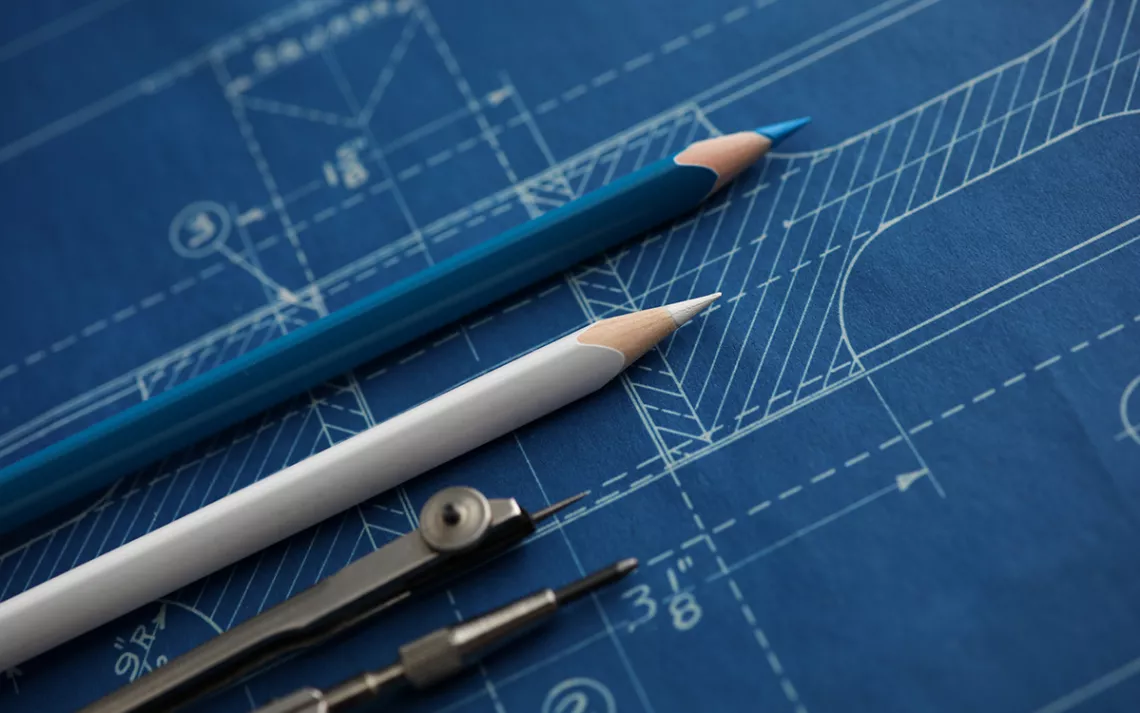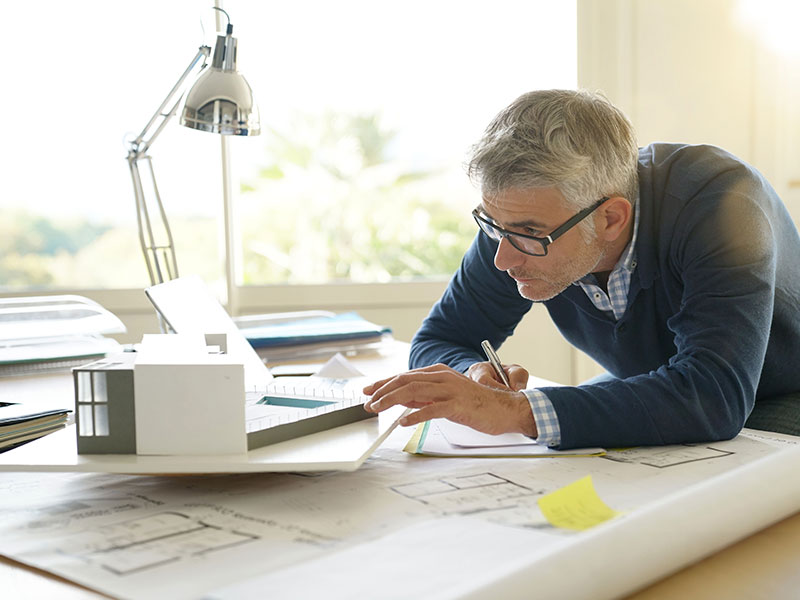Architect Interview Questions You Should Be Equipped to Answer
Architect Interview Questions You Should Be Equipped to Answer
Blog Article
Understanding the Diverse Job Paths Available for Aspiring Architect
As a hopeful Architect, you have a globe of occupation paths waiting for you. Each course offers distinct challenges and opportunities to apply your creative thinking and technological expertise. Whether you're drawn to typical style or the nuances of sustainable style, there's a specific niche that aligns with your rate of interests. Understanding these varied alternatives can shape your professional journey, yet which instructions will you pick to explore first?
Traditional Architecture: Creating Frameworks and structures
Standard architecture focuses on creating structures and structures that mix capability with aesthetic appeal. As you discover this area, you'll value the complex balance in between type and purpose. You'll discover to attract inspiration from historic styles, integrating components like proportion, products, and craftsmanship. Your layouts can reflect social heritage, showcasing neighborhood traditions while meeting contemporary requirements.
You'll establish abilities in drafting, model-making, and website evaluation, permitting you to picture and connect your concepts successfully. Engaging with clients, you'll require to understand their vision and equate it right into possible layouts.
Moreover, building codes and sustainability practices are crucial in your work, ensuring your structures are ecologically friendly and safe. As you expand in your profession, you'll find possibilities in domestic, industrial, or even reconstruction jobs, each offering distinct difficulties. Accepting standard style leads the method for a fulfilling career that pays tribute to the past while forming the future.
Urban Planning: Forming Areas and Public Spaces
As a hopeful Architect, you can play a necessary function as an urban organizer, transforming how areas connect and function. By employing neighborhood involvement strategies, you'll ensure that citizens have a voice in forming their setting. Plus, incorporating sustainable layout principles will assist create rooms that not only satisfy today's needs yet additionally protect the future.
Duty of Urban Planners
While many might think of engineers as the single dreamers behind structures, urban coordinators play a necessary role in forming the more comprehensive landscape of areas and public areas. By working together with various stakeholders, you'll aid develop parks, transportation systems, and property locations that promote social communication and availability. Your experience in spatial layout and neighborhood dynamics permits you to picture future growth while preserving social heritage.
Area Involvement Strategies
Reliable area engagement approaches are vital for city coordinators to guarantee that the voices of locals are listened to and valued in the preparation procedure. To cultivate purposeful discussion, you must prioritize open forums and workshops where area participants can share their ideas and worries. Usage studies and social media to get to a more comprehensive target market, guaranteeing varied viewpoints are consisted of. Collaborating with neighborhood companies can boost depend on and help with deeper links. It is very important to supply clear details concerning suggested tasks and decision-making procedures, permitting residents to really feel informed and equipped. By proactively incorporating and listening feedback, you'll produce areas that mirror the area's needs, inevitably leading to more effective and lasting metropolitan environments. Embrace transparency and continuous dialogue for long-term impact.
Lasting Design Concepts
When making city spaces, including lasting design concepts is critical for creating atmospheres that grow both environmentally and socially. Take into consideration integrating eco-friendly areas, like gardens and parks, to enhance biodiversity and enhance air high quality.
Designing with water preservation in mind is additionally crucial-- consider rainfall yards and permeable surfaces to handle stormwater. Entailing community participants throughout the planning process warranties that the areas you produce satisfy their requirements and urge social communication. By embracing these principles, you'll add to lively, lasting metropolitan landscapes that benefit everyone.

Landscape Architecture: Producing Sustainable Outside Atmospheres
As you discover landscape design, you'll find necessary design concepts that develop functional and attractive outside areas. Sustainable methods play a vital role in ensuring these environments prosper while lessening environmental influence. And also, you'll locate a selection of occupation chances that allow you to make a genuine distinction in just how individuals engage with nature.
Layout Principles in Landscape
Understanding style concepts in landscape architecture is essential for creating sustainable outside atmospheres that harmonize with nature. You'll need to contemplate elements like proportion, range, and equilibrium to guarantee your designs really feel natural and welcoming. Additionally, pay attention to seasonal modifications, making with products that complement the environments year-round.
Sustainable Practices Review
Sustainable methods in landscape architecture not just concentrate on aesthetic appeals yet additionally focus on ecological health and resource preservation. By integrating indigenous plants, you enhance biodiversity and lower the need for chemical fertilizers and pesticides. Implementing efficient irrigation systems helps save water and lessens runoff, safeguarding neighboring communities. You can develop rooms that advertise soil health, such as exercising and making use of natural materials permaculture principles. Furthermore, including green framework, like rainfall yards and permeable pavements, aids in stormwater management and minimizes urban heat. You contribute to a healthier planet and supply spaces that promote area connection when you develop exterior environments with sustainability in mind. Eventually, these practices guarantee your layouts profit both individuals and the atmosphere for years ahead.
Career Opportunities Exploration
With a solid foundation in lasting practices, landscape architecture provides a range of profession courses that enable you to make a significant influence on the environment. You can function as a landscape designer, creating cosmetically pleasing and practical outdoor spaces, or focus on ecological repair, assisting to revive damaged ecological communities. Urban planners typically work together with landscape architects to create environment-friendly spaces in urban setups, enhancing city livability. If you're enthusiastic regarding education and learning, consider ending up being a landscape architecture instructor, inspiring future generations. In addition, you may function with nonprofits concentrated on environmental sustainability or take part in research to introduce new practices. Each course not only forms stunning environments however additionally fosters a much healthier world for future generations.
Lasting Layout: Concentrating On Eco-Friendly Practices
As you explore try this your job in style, embracing eco-friendly methods can establish you apart in an affordable area. Lasting design concentrates on creating structures that minimize ecological influence while improving passenger well-being. By integrating sustainable products, energy-efficient systems, and sustainable building methods, you'll add to a greener future.
Beginning by acquiring expertise of green qualifications like LEED or BREEAM, which can reinforce your credentials. Consider how all-natural light, ventilation, and thermal performance can maximize layout. Team up with engineers and ecological professionals to innovate options that decrease waste and conserve sources.
Don't forget the value of area involvement-- appealing regional stakeholders can inspire designs that balance with the setting. As customers significantly focus on sustainability, your knowledge in environmentally friendly techniques will certainly not only attract jobs yet also fulfill your passion for liable architecture. Welcome this critical aspect of the occupation, and view your profession prosper.
Historic Conservation: Safeguarding and Restoring Cultural Heritage
While you commence on your building journey, think about the essential function of historic conservation in preserving our cultural heritage. This field concentrates on the defense and remediation of significant buildings, sites, and frameworks that inform the stories of our past. By taking part in historical conservation, you'll aid safeguard the architectural heritage that shapes community identity.
As a historical conservation Architect, you'll evaluate historical importance and evaluate the problem of frameworks. You'll function carefully with historians and preservationists to ensure genuine reconstruction techniques are used. This profession path enables you to blend imagination with research study, allowing you to make options that respect initial materials and workmanship.
Your job not just adds to sustainability by recycling existing structures but likewise promotes a sense of satisfaction within areas. Accepting this course will aid you become a guardian of background, protecting the tales and appearances that enrich our lives.
Inside Architecture: Enhancing Indoor Spaces
Historic preservation and indoor design both share a dedication to enhancing the developed atmosphere, yet they concentrate on different elements. While historical preservation highlights keeping a framework's cultural and historic worth, interior look here style nos in on optimizing indoor spaces for performance and aesthetic appeals.
As an aspiring Architect, you'll discover that indoor style permits you to mix imagination with technological abilities. You'll create areas that not only look excellent yet likewise advertise convenience and performance. This area entails understanding exactly how light, shade, and products connect within a room, influencing state of mind and usability.
You'll service different jobs, from household homes to business workplaces, ensuring that each atmosphere meets the demands of its passengers. By prioritizing user experience, you can transform interiors right into practical and motivating rooms, making a considerable influence on just how individuals connect with their environments. Welcome the chance to enhance interior environments and form the way people live and work.
Industrial Layout: Combining Capability With Visual Appeals
Commercial design plays a vital duty in creating products that flawlessly blend aesthetics with functionality, ensuring that what you utilize daily is not only aesthetically enticing but additionally useful. As a hopeful Architect, you could engage yourself in this area, concentrating on designing everything from furnishings to customer electronic devices. Your job involves understanding customer demands, materials, and making processes, allowing you to create innovative services that boost day-to-day experiences.
In industrial style, you'll commonly collaborate with designers, marketers, and makers, making sure that your styles are not just attractive yet also viable. This career course supplies a dynamic atmosphere where imagination meets practicality, making it a rewarding option for architects interested in shaping the products of tomorrow.
Often Asked Questions
What Educational Qualifications Do I Required to Come To Be a Designer?
To become an engineer, you'll need a professional degree in style, commonly a Bachelor's or Master's. In addition, you'll have to finish a teaching fellowship and pass the Architect Learn More Here Enrollment Evaluation to exercise legally.
Exist Certification Requirements for Different Architectural Career Paths?
Yes, there're certification needs for various architectural paths. Architect. You'll require to pass tests, complete internships, and often pursue specialized training, depending upon your picked emphasis, like landscape architecture, urban style, or historical preservation
What Software Skills Are Crucial for Architects Today?

How Can I Gain Practical Experience While Studying Architecture?
You can gain functional experience by interning at building companies, taking part in design competitors, offering for area projects, or working together with classmates on real-world assignments. These chances enhance your skills and build valuable links in the industry.
What Task Opportunities Exist Outside Conventional Style Firms?
You can discover different job possibilities outside standard design companies, like metropolitan preparation, interior layout, landscape design, construction management, realty growth, and even duties in sustainability consulting. Each offers distinct challenges and rewards.
Whether you're drawn to standard style or the nuances of sustainable layout, there's a specific niche that lines up with your rate of interests.When developing urban rooms, including sustainable style principles is crucial for producing atmospheres that grow both ecologically and socially.As you discover landscape style, you'll uncover necessary layout principles that develop stunning and functional exterior areas.Recognizing style concepts in landscape design is crucial for producing sustainable exterior settings that harmonize with nature.In industrial layout, you'll typically team up with marketing professionals, makers, and engineers, making certain that your styles are not only lovely yet also possible.
Report this page